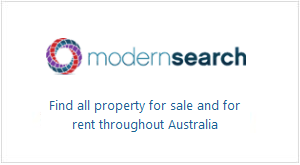
If you’ve spent any time surfing the net, you’re bound to have come across a multitude of advertisements. There are tickers and pop-ups and links, but no doubt you’ve also noticed the most prevalent of them all: banners.
Banners are one of the most popular forms of Internet advertising, and advertising is one of the main sources of revenue for a website. So as a business owner, how can you best play your part in this revenue stream?
Banners are small rectangular ads that appear on all different sorts of websites and contain endless messages, but all have the same basic function: to get users to click on them so they are transported to the advertiser’s website. They are a fantastic way of promoting your business, product or service to a targeted audience and are a comparatively cheap form of advertising to add to your mix. So how do you use banners effectively to promote your services?
First let’s look first at the different types of banner ads and what makes a good one.
The Internet Advertising Bureau (IAB) has produced universal Ad Unit Guidelines for marketers, agencies and media companies for use in planning and creating Internet ads. The IAB has stipulated eight banner ad sizes, the most common of which is 468×60 pixels and looks like this:
![]()
There is no universal file size constraint, however most websites will ask advertisers to keep the ads quite small, say about 18k, because they add to the time it takes a user to load a page and therefore should not be too large. It is wise to ensure you stay within the designated limits when producing your ad so browsers aren’t turned off before they even see your message.
The content of banner ads varies enormously depending on what you’re advertising and where the ad is placed. You may choose to have a simple static ad with limited graphics, or you may use an animated .gif which means there’ll be some movement in your ad via the use of a succession of images or text. The fanciest banner ads of all are the rich media ads which use very creative graphics and may contain video, audio or specialist programming. These ads will have larger file sizes and may contain interaction beyond a simple click-through.
Whilst banner ads are not difficult to construct, there are some key factors that your designer should take into account. The difference between a good (and effective) ad and a bad one can be subtle and sometimes difficult to pinpoint, but here are some basic guidelines to consider:
- Use simple messages rather than long complicated ones
- Advertise one product or service - not your entire business - and have the ad link through to the relevant page on your website
- Animation and movement attract attention better than static ads
- Your graphics should be interesting and suggestive but not too obscure
- Keep file size small
- Place the ad on a page with relevant content so you are more likely to reach your target audience
Before you get too excited about having the fanciest ad on the web, you need to ensure you have a clear objective laid out for your advertising. Just as in newspaper or radio advertising, you need to be clear about the message you want to convey and the success factors you’ll use to measure the effectiveness of the ad.
Typically you’ll want your ad to achieve click-throughs and brand awareness. Publishers hope that the user will click-through to their website and ultimately buy the product/service on offer. A click-through means the banner ad has delivered the advertiser a visitor that they may otherwise not have had and is a truly measurable success factor. Brand awareness, where a visitor recalls the brand down the track and possibly makes a decision to purchase then, is harder to measure but is still considered a success factor.
Whilst there are several ways a banner ad can be successful, the typical measures advertisers will look at are:
- Page Views (Page Impressions) - this is how many times a particular page is called from the server, which is important to advertisers who place a banner on that page because it indicates how many visitors have possibly seen their ad. This is a measure of exposure rather than brand awareness and is a typical way of selling ad space - cost-per-thousand impressions, or CPM.
- Click-throughs - the number of people who click on the ad linking through to the advertiser’s website. Ad space is often sold on a cost-per-click (CPC) basis.
- Click-through rate (CTR) - this is the ratio of page views to clicks and is expressed as the percentage of total visitors to a page who clicked on the ad. CTR is often very low, say one to two percent.
- Cost-per-sale - how much advertising money is spent on making one sale. This calculation will vary depending on the type of service or product.
Obviously some measures are more important than others to different advertisers, but all of these elements should be considered at some point in the ad buying and measurement process. They will affect the price that you pay for the ad space and will be the process by which you can evaluate your advertising campaign and possibly tweak it for better success.
Related posts:





